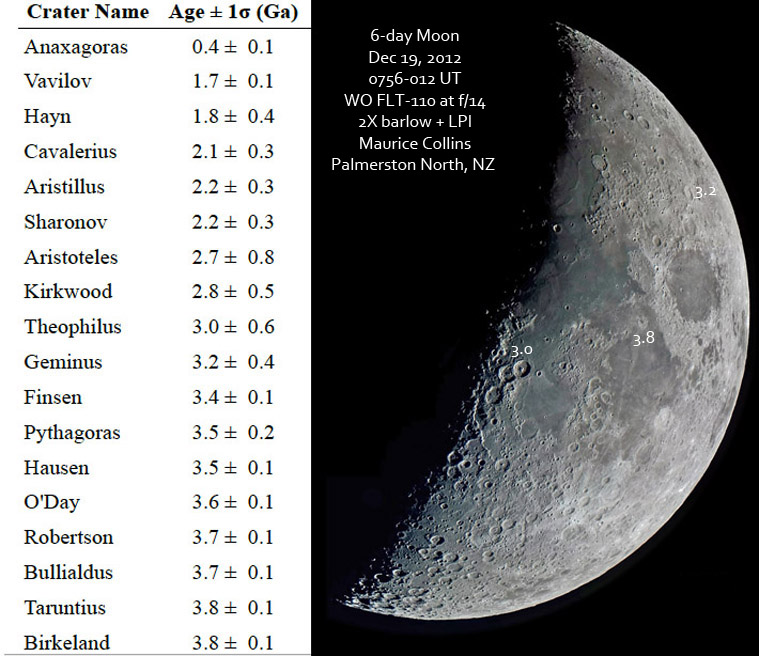January 13, 2023
New Ages for Old Craters
Originally published February 19, 2013

telescopic image by Maurice Collins, and crater list from Kirchoff and colleagues
Almost no lunar craters have known formation ages. We commonly say that Copernicus is 800 m.y. old and that Tycho is 108 m.y. old because of very accurate dating of Apollo samples. But the linking of those samples to the two craters is only circumstantial. We do know the ages of mare rock samples at Apollo landing sites, and counts of the numbers of impact craters around those sites yields a calibrated crater counting chronology. By use of the calibrated curve, crater counting at other locations can be transformed into ages of those locations. Now Kirchoff and colleagues at the Southwest Research Institute in Colorado have used LRO camera images to count craters and determine ages for 18 large craters previously considered to be Copernican or Erastothenian. Based on rim sharpness and the existence of rays these are among the youngest lunar craters. Except, the crater counts found them to be older than expected. I am surprised that Theophilus is 3.0 billion years old. But its rays are faint and the impact melts north of the crater rim are cratered and eroded. And Taruntius, which also has faint rays is surprisingly old at 3.8 b.y. (giga years) - in fact that is about the age of the nearby Mare Fecundiatatis lavas. But as a floor-fractured crater, it had to be in existence when magma was still molten. Perhaps many craters are 1-2 b.y. older than I've thought. Or perhaps the crater counting or calibration curves are way off.
Chuck Wood
Yesterday's LPOD: Slippery Slopes
Tomorrow's LPOD: Micro-Treasures
COMMENTS?
Register, Log in, and join in the comments.



